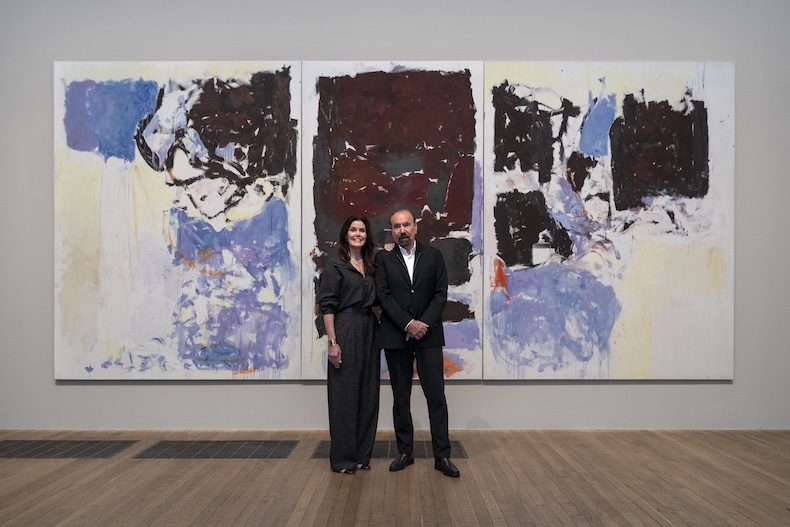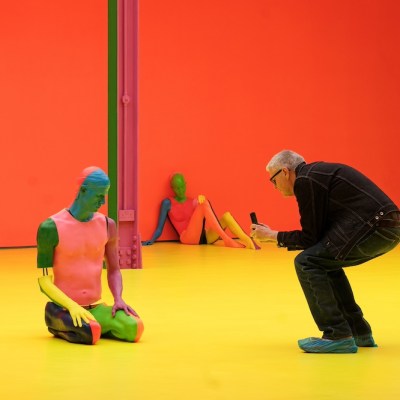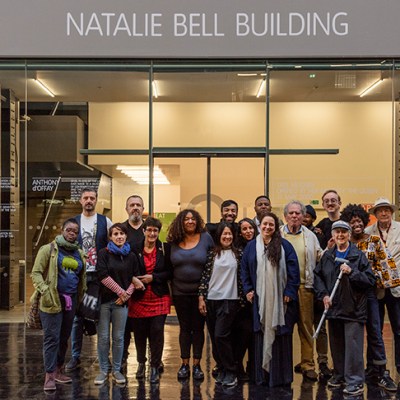On 25 June, Tate Modern marked its 25th anniversary with a lavish gala dinner in the Turbine Hall, attended by nearly 700 people. The guest list was a blend of the cultural, philanthropic and celebrity elite: trustees and patrons, as well as artists such as Marina Abramović and Antony Gormley and stars including Reese Witherspoon and Daniel Craig. Guests dined at round tables of ten and were entertained by performances from the Pet Shop Boys and Gwendoline Christie. A silent auction raised eyebrows and funds, with a Tracey Emin-embroidered tablecloth selling for £420,000. By the end of the night, the event had reportedly raised more than £1m.
The highlight of the evening came when the Tate’s chair, Roland Rudd, formally announced the creation of the Tate Future Fund – an ambitious, US-style endowment campaign aimed at securing the institution’s long-term financial sustainability. He noted that the Tate has already secured £43 million in pledges from trustees – including himself; Nick Clarry, managing partner at CVC Capital Partners; and philanthropist Jack Kirkland, founder of the Ampersand Foundation – along with significant contributions from Bloomberg Philanthropies and Miami-based collectors Jorge and Darlene Pérez. The goal is to reach £150 million by 2030, making it one of the most ambitious cultural fundraising efforts in the UK to date.
The move comes at a time of increasing financial strain for museums and cultural institutions. Tate’s annual report for 2023–24 confirms this: trustees approved a deficit budget due to self-generated income failing to keep pace with rising post-pandemic costs. The gallery’s reserves have dropped sharply – from £22.6m in 2022–23 to £10.9m at the end of 2024. Government support is also in decline: the grant-in-aid the Tate received in 2023–24 was £50.8m, down from £54.2m the previous year.
Unlike in the United States, where major endowments are the norm, such funds remain rare in the UK. The Victoria and Albert Museum holds just over £9m in endowment funds. The Royal Academy has the Paul Mellon Endowment Fund, seeded with a £3 million legacy in 2000. By comparison, the J. Paul Getty Trust in Los Angeles reported a staggering $8.4 billion endowment in 2022, while the Metropolitan Museum of Art in New York declared $3.3 billion in 2021. Of course, US institutions typically receive far less government funding and are therefore more reliant on private philanthropy.

In the UK, that balance is beginning to shift. Core government funding for arts and cultural organisations fell by 18 per cent between 2010 and 2023. Meanwhile, public resistance to corporate sponsorship has grown louder – particularly in relation to fossil fuel companies. The Tate is one of several cultural institutions that were previously part of a block sponsorship by British Petroleum (BP) but have now rejected fossil fuel funding.
Compounding the challenge is the so-called ‘wealth drain’. Changes to the UK’s non-dom tax status under the Labour government are projected to drive away some 16,500 millionaires this year, according to the wealth advisory firm Henley & Partners. The loss of these donors is already being felt in various sectors, from luxury goods and restaurants to real estate and, crucially, cultural philanthropy. When a wealthy patron relocates, their philanthropic loyalties often follow.
Against this backdrop, the Tate’s endowment campaign can be seen as both bold and necessary. But will other institutions follow suit?
Leslie Ramos, a philanthropy advisor and co-founder of the arts philanthropy agency The Twentieth, explains that endowment funds are much more difficult to build than straight donations, because donors to these funds do not see the direct effect of their generosity. Moreover, institutions need teams to administer endowment funds and manage investments, she says. ‘Such funds are often not feasible for small institutions, and they are not a solution if there is not enough money for operations. They are the cherry on the cake, not a solution for basic shortfalls.’
There is another dimension to this. During the gala dinner, Rudd mentioned the grant-in-aid the Tate receives from the government. It seems to have been an aside, triggered by the presence of Chris Bryant, minister of state at the Department of Culture, Media and Sport. But it does raise serious questions about fundraising for cultural institutions. The more successful the campaigns are, the more likely that the government will take notice, and could draw some unwelcome conclusions.
Georgina Adam is a journalist and author. Her latest book is The Rise and Rise of the Private Museum (Lund Humphries).



